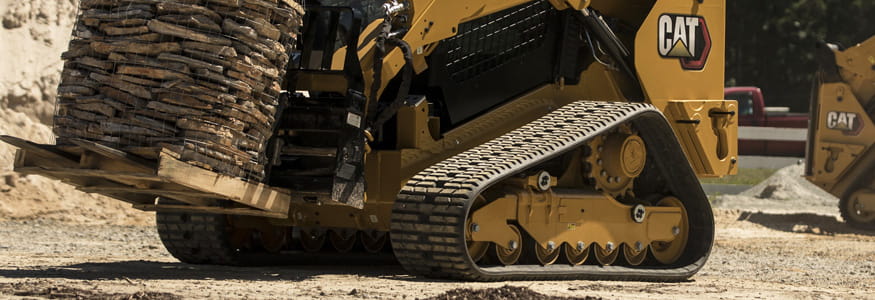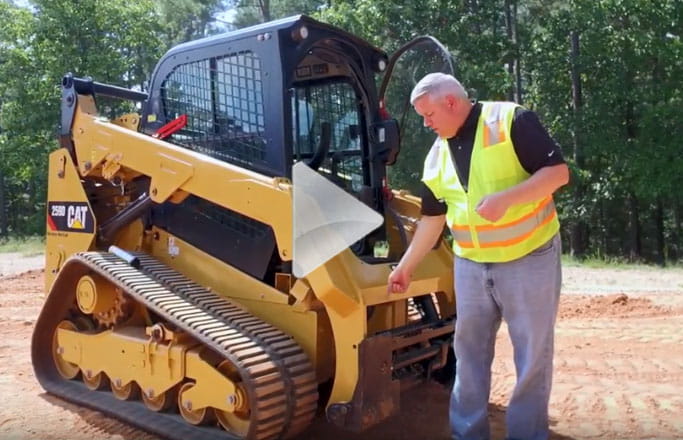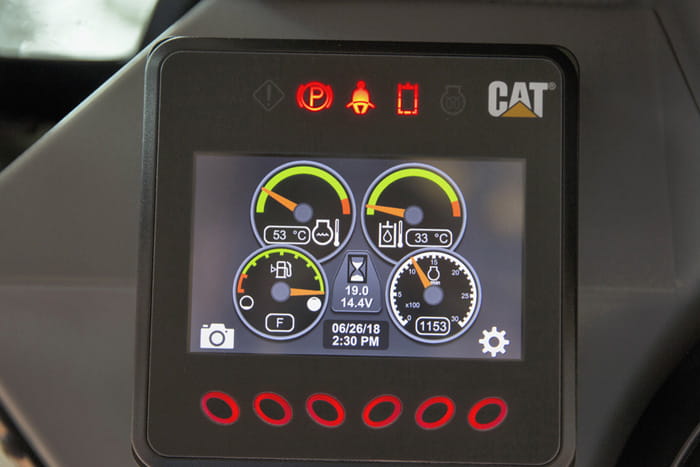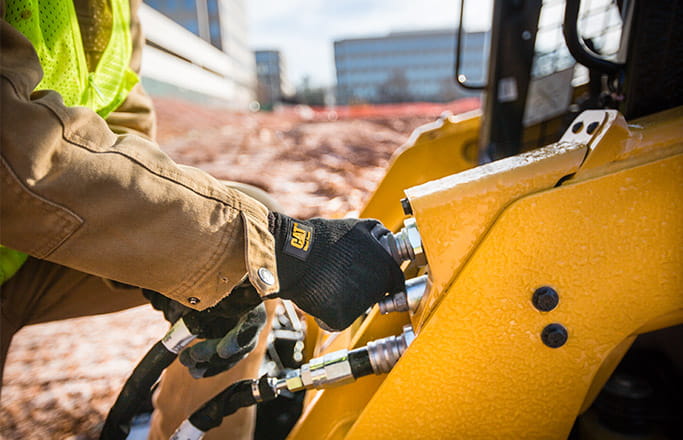Seven factors that will affect undercarriage wear - Cat Loaders


There are several factors that will affect how fast your new Cat® compact track loader (CTL) or multi terrain loader's (MTL) undercarriage wears. The key to maximising productivity and the service life of your undercarriage components is to recognise these factors and make adjustments whenever possible to minimise their effect.
The job application of a machine has a direct influence on undercarriage life. Common applications include excavation (digging), load and carry, trenching, dozing and grading.
The amount of torque and horsepower required by an application has a direct impact on undercarriage component wear. Working any piece of equipment to its fullest potential will cause maximum wear to certain components. In general, tough applications such as excavation and dozing maximise the torque and horsepower being transferred through the sprocket to the tracks and cause increased wear. Easier and less demanding jobs, including trenching and finish grading, require less torque and horsepower and cause minimal wear.
The materials you work in can have as much or more impact on the service life of undercarriage components than some applications. In general, the more abrasive the material, the faster components wear. As an example, rocky, jagged material or construction debris will cause the most wear on an undercarriage. The least wear will occur when working on soft, loamy soil or non-abrasive surfaces, such as turf and finished landscaping.
Because they have exceptional flotation, traction and versatility, CTLs will work on most materials and MTLs will work on virtually any material, including scrap or demolition debris, however, harsh conditions may cause significant premature wear on the undercarriage, increasing owning and operating costs. Consider the cost of replacing undercarriage components when working on any abrasive materials and build these costs into what you are charging for the work.
How you operate your Cat CTL/MTL can be one of the most influential factors that affect undercarriage wear and operating costs.
Aggressive operation may help get the job done faster, but it can also increase the rate of wear and overall operating costs. For example, you can make a quick change in travel direction by counter-rotating, but by doing so you might cause unnecessary wear to tracks and undercarriage components. Turning without counter-rotating may take a second longer, but can significantly extend the service life of undercarriage components.
Operating on slopes also causes wear. Adjust operating techniques when working on slopes to minimise wear.
The terrain type—hilly, bumpy or flat—is another wear factor to consider. Working your loader on a level surface can cause the least undercarriage wear, whereas working on rugged, heavily sloped terrain can cause components to wear faster.
Your Cat CTLs/MTLs undercarriage is not a high-maintenance item, however following some simple preventive maintenance procedures helps you maximise service life and the value of the undercarriage components.
A properly adjusted track not only maximises the service life of the track, but also maximises machine performance. Loose or overly tight tracks reduce service life and machine performance.
Cleanliness of the machine’s undercarriage is also critical. Much of the component wear is caused by material that has been ingested and retained in the undercarriage. You can avoid some unnecessary wear by keeping the undercarriage clean and free of debris.
If your new loader uses a turnbuckle arrangement to adjust track tension, it is recommended to keep the turnbuckle lubricated with a good, penetrating oil spray. This helps eliminate rusting and seizing of the turnbuckle and makes track adjustments easier when required. Simply spray the threads and nut on the turnbuckle with a suitable lubricant when needed.
If your new loader uses front and rear torsion axles for suspension, they will require daily greasing. The grease points are easily accessible from the ground. Regular greasing of the torsion axles is important to insure the suspension system will continue to provide a comfortable ride and improved load retention while reducing shock and vibration throughout the machine. Your Operation and Maintenance Manual will specify the location and procedure for lubrication.
Some Cat loaders use an internal positive drive system that allows them to travel at high speeds with minimal friction. The drive sprocket contains a set of rollers that mesh with the track drive lugs. Steel outer roller sleeves rotate freely to minimise friction between rollers and track lugs. These outer sleeves wear over time and occasionally need replacement. Operating in sandy or gritty soils will cause these sleeves to wear more quickly than when operated in less abrasive materials.
If your new loader uses an internal positive drive system, check the condition of all sprocket roller sleeves during your daily machine inspection, making sure they rotate freely, and are within the wear limits described in your Operation and Maintenance Manual. Replace any outer roller sleeves that are below the minimum thickness recommendation.
Roller sleeves that don’t meet the minimum thickness requirements or don’t turn freely will increase friction and cause unnecessary wear to track drive lugs.

A well-lubricated machine is a high-performing machine. Daily greasing these specific points on your Cat machine will help keep your equipment running at peak performance.

Watch the video or download this user guide from Caterpillar to learn how to master your Cat loader's advanced display screen (ADS). It provides step-by-step visual instructions that are easy to follow.

Preventative maintenance can add years to the life of your machine, though it's easy to get out of the habit. These are the steps you should complete each day.